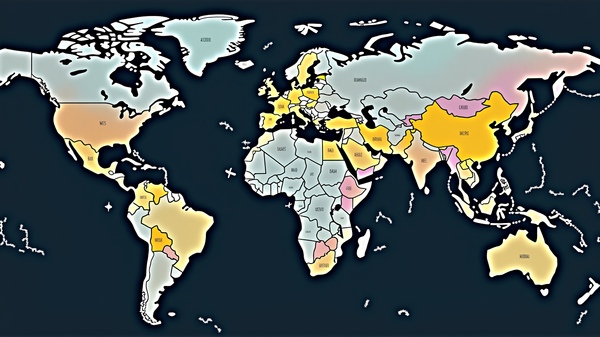The Geopolitical Financial War: U.S. Assets and Global Tensions
A simultaneous decline of U.S. bonds, stocks, and the dollar raises concerns, signaling a geopolitical financial war that challenges the Trump administration.

The world of finance is no stranger to turbulence, yet the current situation is rather atypical: U.S. bonds, stocks, and the dollar are all declining in unison. It presents a disturbing scenario that has not only grabbed the attention of economists worldwide but has also prompted a rare public acknowledgment from the Federal Reserve, asserting that measures are in place to counteract the trend. But what stirs behind this unsettling facade?
A Shift Beyond Tariffs
Interestingly, this financial tumult isn’t solely due to the often-cited trade tariffs. Analysts noticed early tremors during the 2025 Munich Security Conference, where the notion of shifting political alliances came to the fore. The steady decline in U.S. bonds since late last year paints a vivid picture. As noted, when the 10-year Treasury yield began escalating early in the year, it intensified discussions. The 10-year yield flirted with the 5% mark—a threshold of no small import—prompting significant concern about the Federal Reserve’s capacity to manage liquidity. According to CEOWORLD magazine, the pervasive sense of a flight from dollar-denominated assets is palpable.
Rising Tensions with Europe
The core of this geopolitical financial war seems to veer more towards the ideological divide between America and Europe rather than the typical U.S.-China narrative. The Trump administration, under scrutiny for its “reciprocal tariffs” strategy, is facing mounting pressure. Prominent economic voices, including those from within Principal Asset Management, highlight just how much this bond market volatility has stirred the political pot. As U.S. interest rates elevate, accompanied by soaring yields, international investor confidence in U.S. assets dwindles.
Strategic Maneuvers or Structural Shifts?
In addressing these dynamics, President Trump might consider several tactical shifts. Ceasing hostilities in the Ukraine conflict could potentially redirect capital back to the United States. Moreover, adjusting the tariff strategy to a more reliable, less punitive level might add predictability to global trade relations. Persistently high tariffs seem emotional and unattractive to trading partners. Meanwhile, the Federal Reserve’s playbook may comprise heightened activity in bond purchases and liquidity improvements. The notion of raising gold prices remains controversial, yet it could play a part in stabilizing market perceptions.
The Endurance of the American Financial System
While confidence in U.S. Treasuries appears shaken, they arguably retain robustness compared to European or Japanese options. As Europe grapples with its internal challenges, the longstanding stability provided by American economic infrastructure can act as a steadfast rock in turbulent financial waters. Despite the geopolitical financial war, the complexity of global trade, investment flows, and political allegiances lend a perplexing twist to the narrative.
In this intricate web of capital and policy, discerning whether the U.S. can leverage its remaining strengths to navigate this geopolitical financial landscape remains a pivotal question. As the scenario unfolds, it illustrates just how interconnected—and narratively rich—the world of global finance can be.





